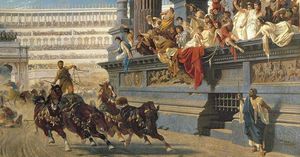Hawthorns football trouble the latest example of a sad trend that goes back centuries
The mob violence – tribal in its origin – that scarred the FA Cup derby between Albion and Wolves brought back memories of the hooliganism that scarred football in the 1970s and early 80s.

Those were dark days of firms, football specials, skinheads and sardine-packed, seatless stadiums.
They were revisited at the Hawthorns, a sickening Sunday that gave the game in the Black Country a bloody nose.
Yet crowd trouble and football have stomped hand in hand since someone decided good sport could be spawned from an inflated pig’s bladder.
Hooliganism is a very old disease. It is not a solely English disease. Where fans gathered, disorder frequently followed – even in the historic town of Shrewsbury.
An observer of one 1899 fixture observed: “There were many thousands at Shrewsbury on Easter Monday, and the concomitants of betting, drinking and bad language were fearful to contemplate, while the shouting and horseplay on the highways were a terror to peaceful residents passing homewards.”
Back in 1314, Edward II was the first to tackle it. Back then, football was a nasty melee of rival villages attempting to kick or carry a spherical object from one side of heathland to the other. It was akin to today’s Atherstone ball game with bad attitudes and plenty of blood.
Such was the crowd trouble ignited by matches that soon descended into inter-parish punch-ups, the king banned them. Edward was also concerned the new craze was interfering with obligatory archery practice.

He initially gave football the red card in London after merchants complained: “There is a great noise in the city caused by hustling over large balls from which many evils may arise which God forbid.”
A little flowery, perhaps, but the message holds true today.
General sporting riots have an even longer history. In Constantinople in 532AD rival chariot race supporters battled for a week, burning down a significant portion of the city and killing thousands.

Mass, violent soccer insurrection was nameless until the 1890s, when the exploits of a notorious Irish family, the O’Hooligans, gained national attention through a popular music hall song.





